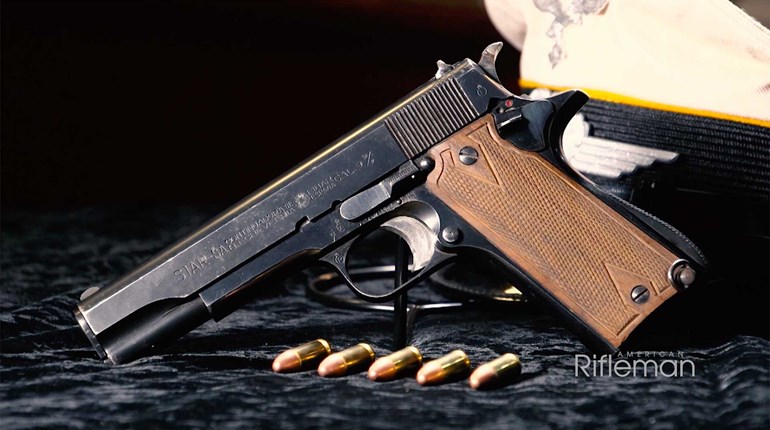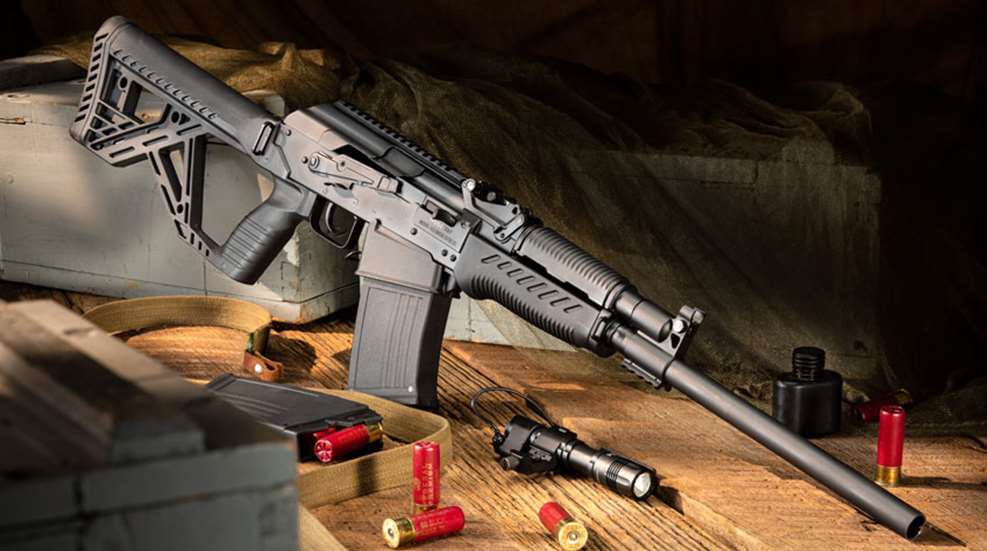
Shotgun enthusiasts already recognize the distinct Slavic origins in the design of the Citadel RSS1. It’s essentially a Molot Vepr shotgun, which, along with the Saiga-12, was one of the go-to tactical scatterguns for decades. Based on the AK system, these guns were detachable-magazine-fed, semi-automatic shotguns available on the market before even the AR-15 became wildly popular with consumers, let alone other modern tactical guns. Then international politics happened.
In February 2014, Russia invaded Ukraine. In the following years, the Obama and Trump administrations imposed sanctions on select Russian businesses, including Molot-Oruzhie and Kalashnikov Concern, makers of the Molot Vepr and Saiga-12, respectively. With that, two major manufacturers of Russian AK-style shotguns were out of the game, opening up a hole in the market.
That doesn’t mean demand went away, though, and several manufacturers stepped up to offer magazine-fed semi-automatic shotguns with varying degrees of success and affordability. The Citadel RSS1 is one of the more-affordable options on the market. However, the design is the only Russian element of this gun. Like many of today’s budget-priced shotguns, this option comes out of Turkey.

In keeping with the AK-based operating system, the RSS1 functions via a piston-driven gas system. There’s much literature on the market that characterizes the Molot Vepr-style operating mechanism as a “self-regulating gas system,” but that’s not correct. Later models of the Saiga, the Molot Vepr and consequently the Citadel RSS1 have a single-port system that’s sized right to run pretty much the gamut of standard shotshell loads. Legacy Sports, importer of Citadel-brand guns, recommends a standard 11⁄8-ounce load for the RSS1. Consequently, that means heavier loads will produce pretty significant gas blowback and be harder on internal components, while lighter loads are more likely to encounter cycling issues.
Though the core design and functionality of the Citadel RSS1 is nearly identical to that found on earlier AK-style shotguns, there are unique differences in the Citadel, along with a number of welcome improvements. One distinctive feature found on the Citadel RSS1 is its buttstock, which features a large, thumbhole-style design that includes the pistol grip and wraps around the lower portion of the receiver.

Thankfully, this stock is capped with a generous buttpad made from molded rubber, which softens the blow of heavy, 12-gauge defensive shells a bit. There’s an included sling loop on the right side of the stock, and this single rear loop is supported by similar loops found on both sides of the front handguard cap, though the width of these front sling loops is decidedly smaller than the rear.
At the rear of the receiver, consumers will notice the dustcover catch in its traditional location. The cover is solidly secured to the receiver, owing to the railed Picatinny top that allows for easier optics mounting. The rear catch prevents any noticeable vertical play, while the front of the cover is actually mounted on a hinge pin that obviates any lateral movement, making for a fairly solid optics mount.
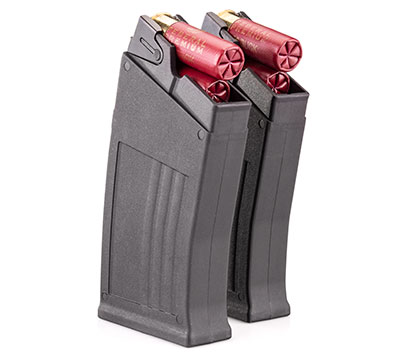
Also noticeable is the shortened overall length of the solid, hinged cover, while the ejection port is shrouded from dirt and dust with a sliding, two-piece design. Charging is done the AK way, thanks to the machined bolt handle integrated into the bolt-carrier assembly. For those eschewing the use of the railed optics base atop the dustcover, aiming is also done the AK way. The Citadel RSS1 uses traditional, AK-style sights complete with an elevation-adjustable rear assembly and highly optimistic range markings for a 12-gauge shotgun.
Back in the receiver is where we start to see some of the consumer improvements on the RSS1 versus older-model, AK-style shotguns. One of the missed features on most guns of this type is a bolt hold-open, either manual or automatic. In addition to locking back on an empty magazine, there’s a small button found at the rear of the magazine well that allows shooters to lock the bolt open manually, though the slotted surface can chew up your finger a bit.
One of the other easy, but welcome, enhancements found on the Citadel RSS1 is the redesign of the selector lever. In addition to the traditional ledge found on the forward edge of the lever, there’s also a more-pronounced, curved ledge located mid-way between the pivot point and tip, which is designed to allow for single-finger or thumb activation of the safety.
For a semi-automatic, mag-fed shotgun priced about $600 or less in shops, it all sounds great, but the proof is in the range time. We ran 160 rounds through the Citadel RSS1, the bulk of those rounds being the 11⁄8-ounce target loads recommended by Legacy Sports. There’s some chatter that most AK-style shotguns actually have a bit of a break-in period in the first 25-50 rounds where you’re likely to see stovepipes and FTEs, and we did experience two within the first 25 rounds, but those were the extent of malfunctions with standard loads, as the other 100-odd target loads chambered and cycled fine.
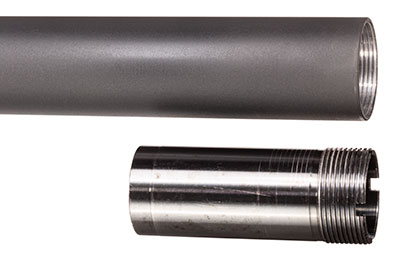
Though the company recommends 1 1⁄8-ounce target loads, these shotshells aren’t really useful beyond the sport-shooting sphere, so I expanded the fodder to include a few other loads more suited for self-defense. The gun ran Federal Premium’s 2¾-inch 00-Buck Magnum loads without issue, as well as the company’s 000-Buck Maximum shells. However, the Low Recoil 00-Buck load from Federal didn’t have enough gas to provide consistent ejection.
For good measure, we also rolled through a few boxes of 3-inch TSS Turkey loads. There wasn’t any issue loading the lengthy shells into the box magazine, but there was a bit of a hang-up when chambering the first round after actuating the bolt release. However, the gun fed every subsequent round without issue. With 3-inch loads, the gun is significantly overgassed. The operating mechanism recoils violently, and excess gas bleeds out of the ejection port and through gaps in the dustcover with enough force to sting your dominant eye behind shooting glasses. The gun will run with 3-inch loads, but it isn’t pleasant for the shooter or the gun.
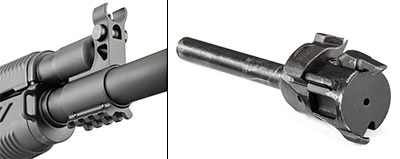
While Citadel’s efforts to enhance the AK-style shotgun with a few improvements are certainly appreciated, my shooting experience highlighted a few shortcomings of these changes. First, the molded pocket into which the rear receiver sits in the stock includes pretty sharply angled ledges on either side, and the ledge on the left side of the stock rubbed my thumb’s knuckle pretty raw over the course of 160 rounds.
The bolt-catch and release mechanism also leaves a bit to be desired in regards to placement. When it’s actuated, the release jabs downward into the molded channel that guides your trigger finger into the guard. Those who ride the edge of the grip into the trigger guard rather than hooking their finger in and leaving a bit of space on the edge of the grip will be surprised by a nice, little jab once the magazine follower actuates the bolt catch and sends that release lever shooting out of the receiver into your finger. Additionally, the bolt-catch button located just behind the magazine-release latch features a threaded sleeve that could have used a dab of Loctite, since the sleeve and the spring it contained inside the receiver shot out during my post-range once-over of the gun.

Finally, that stamped ledge on the RSS1’s safety lever is a nice idea, but in practice, it proved to be incredibly difficult to actuate. The closer you place the ledge to the pivot point, the more muscle it takes to force the safety lever into its fire or safe position. I handed the gun to several shooters to see if they could activate it with a single finger or quick thumb swipe, and none could. Possibly, after a few hundred ups and downs, it could wear in, but I noticed no improvement after spending a few days with it.
The Citadel RSS1 isn’t perfect, but for the price, it’s a semi-automatic, mag-fed shotgun that runs. Stocks can be replaced, the bolt-catch mechanism issues are relatively minor, and the safety lever is what it is. Ultimately, the highest priority is to have a gun that runs, and the setup of the RSS1 ensures that it’ll chew up and spit out most standard shotshells on the market, and it’ll handle the heavy stuff, too. The shotgun is compatible with Molot Vepr mags and accessories, so you can load this shotgun up with 10-round stick magazines and 25-round drums to your heart’s content. If you like the idea of an AK-style, semi-automatic shotgun, the Citadel RSS1 gives you what you’re looking for without emptying your wallet.















